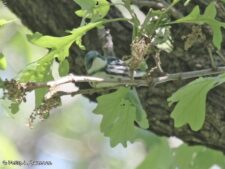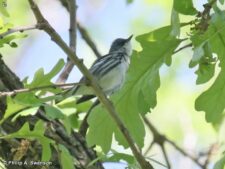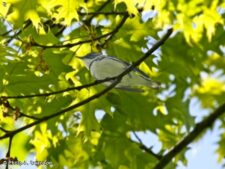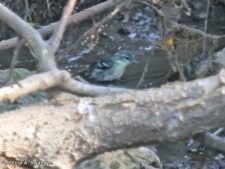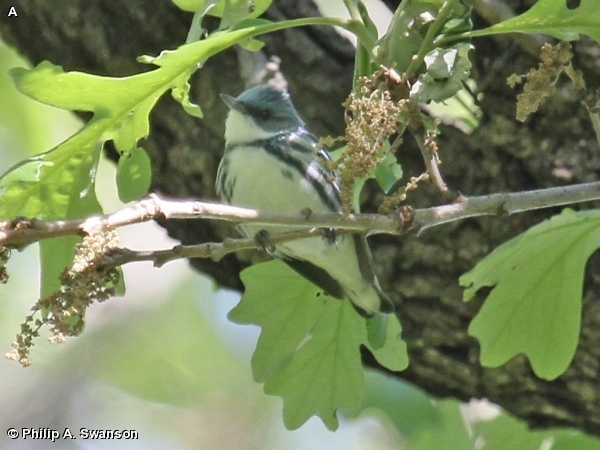
4.5 inches long. The Cerulean Warbler has white wing bars, white tail spots, and a thin, pointed bill. The male has pale-blue to blue-gray upperparts with black streaks on the back. There are dark streaks on the flanks. The undersides are white with a thin dark band across the breast. The female has a white eyebrow and the upperparts are more bluish-green. She also lacks the breastband and has reduced streaking on the flanks.
In the past the Cerulean Warbler uncommonly bred in the Forest, arriving in early May and leaving by the end of August. Now it rarely appears in the Forest but does locally show up in the Omaha area.
The Cerulean Warbler is a small, active, insect eating warbler. It spends much time foraging high in the canopy. This means it is easiest to see the breastband but not the blue upperparts. Although it was abundant at one time, the numbers have drastically reduced in some populations while somewhat increasing in other populations. The Cerulean Warbler is a vigorous singer and is often first identified by its song. The song is a series of accelerating buzzy notes on the same pitch ending in a drawn out buzz “zray, zray, zray, zray, zeeeee”.
Disclaimer: The content of NatureSearch is provided by dedicated volunteer Naturalists of Fontenelle Forest who strive to provide the most accurate information available. Contributors of the images retain their copyrights. The point of contact for this page is: Phil Swanson.


